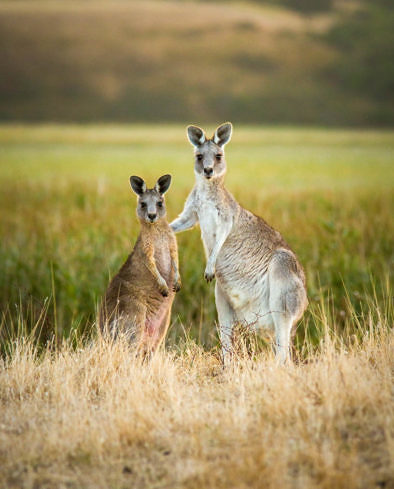Episode 8 - Uluru in Australia
Travel to Uluru in Australia's red desert and take a journey with different Aboriginal tribes. Learn more about the famous monolith and different interactions with the 250 different Aboriginal clans in Australia.
Listen Now
Beyond Kangaroos And Koalas
Let’s go on a journey today — a journey to Australia, to the middle of Australia. Beyond the kangaroos and the koalas to the kaleidoscopic range of oranges and reds, where Uluru stands proud in the heart of the desert. He used to be called Ayers Rock, but before that it was called Uluru, and there is this incumbent feeling of mystery that makes this indigenous name far more relevant.
I visited Uluru, and when I was flying there, I had this strange thought in my head, “I’ve flown 24 hours to get to Australia. And now I’m flying another three hours to go see a rock.” Which seems absolutely ridiculous. But what a rock, what a rock it is! 350 meters high. It’s so big. It takes you about an hour to drive around its base. And when I got that, there wasn’t just one rock.
I came for Uluru. I came for this mystical expanse that rose famously from the red Australian desert. And nearby, you will also find Kata Tjuta, 36 stones of Kata Tjuta. Equally resplendent, mystically changing at sunrise. A series of sandstone peaks coming out of the shadows. Kata Tjuta is actually higher, it’s even more impressive than Uluru, even though the famous pictures and all the cameras point the other way, because it’s Uluru, it’s the big monolith.
A Place To Conquer…
I always remember this brilliant sign at the base of Uluru. It said: “Is this a place to conquer, or is this a place to connect with?”
And for years people — visitors, foreign visitors, not Aborigines — climbed Uluru, ‘cause that’s what a rock is for, right? Climb the rock, put your flag in, conquer it. But it’s a very sacred place to the local Aboriginal tribe. And they had this very welcoming message, a message that reveals a lesson in symbiotic coexistence, a lesson that Aboriginal people are very eager to share with all visitors.
And as I travelled more around Australia, I grasped more about this culture that can really teach us so much today. As we grasp with how we co-exist in the world and how we survive in actually, what is becoming a harsher reality. We have Aboriginal people who have done that since before Europe even existed. And before going to Australia, my understanding of Aboriginal culture was incredibly simplistic. I thought they were Aborigines. I thought they were one.
But Australia was divided into over 250 countries, 250 different Aboriginal tribes. Each with its own indigenous language. I spent time with the Kuku Yalanji. Now they are rainforest dwellers and fishing experts in the Northeast of Australia. So, looking out to the Great Barrier Reef, that’s where they go stabbing for mud crabs.
…Or To Connect With?
If you want to know more about it, check it out on Kated.com, the experiences with the Kuku Yalanji. Very welcoming and showing a real, quite a good side of modern Aboriginal life. You know, not living in the bush and chanting around the fires as some people might expect when they arrive. Certainly I thought maybe I would experience, but living in a nice house and continuing that ancient practice by going searching for food on the coast.
And the guides would pick some green bugs off a plant and give them to me. And I ate them, a powerful antiseptic. And another guide took me through the rainforest, and had me mixing green leaves with water to create soap. Very powerful. Another guide had me asking the spirits for safe passage and then showing me in the rainforest a plant that can be used to create rope. The best trees to use to create a shelter. The rocks for where men go to the toilet, and the rocks for where women go to the toilet. the specific rock that’s great for opening nuts. The poison you can find if you want to arrow a possum.
Coexistence With Nature In The 21st Century
Incredible coexistence with the local environment, the local setting, but different to how I imagined because brought forward into the 21st century. We live in the 21st century and the Aboriginal people of Australia, the 250 different clans, all now have their way of living coexisting in a modern world as well.
Now this is not the place to go into all the challenges that have taken place there. I mean, back in 1967, Australia held a referendum to decide if Aborigines should be classified as people. There were a whole generation of children stolen from their Aboriginal parents and brought up in white households.
There was a really horrific history taking place there, but what I experienced and what I really loved was this pride in the old practices and willingness and eagerness to share a way of life and a coexistence with nature that is so powerful and is so meaningful in today’s modern world.
And it’s always those words that come back to me when I think about Australia — is this a place to conquer or is this a place to connect with? And through Aboriginal people and some great guides that I had, Australia has always been a place I want to connect with more and more and more.






